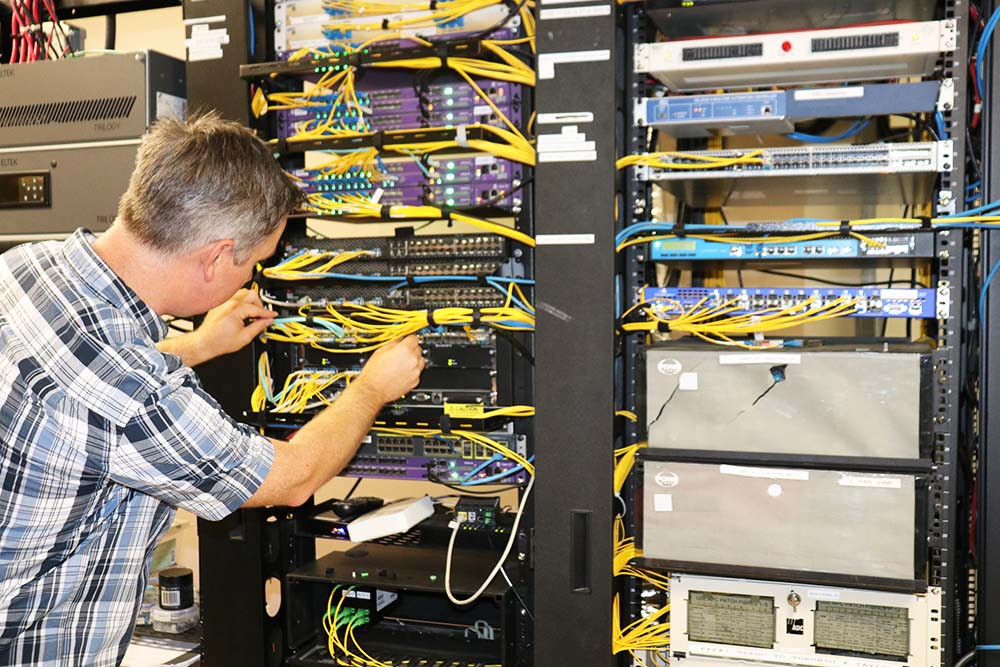By M.J.
Working with Lakeland for over 6 years has allowed me the pleasure of working with and talking to hundreds of customers. Whether it was installing their service into the home or talking to them over the phone, one of the common struggles I hear about is Wi-Fi coverage throughout the home. Wi-Fi can feel very magical and mystical and can seem very unpredictable in how it reacts in different environments. When I first started off trying to understand Wi-Fi, I found it a lot easier to lean on my background knowledge of acoustics. Once I started to understand the similarities of Wi-Fi and soundwaves, it became a lot easier to assist customers in troubleshooting why they are having issues in their home. Let me give you some examples.
If you look at and research the differences between Wi-Fi frequencies, you will find that the 2.4Ghz frequency has a wider wavelength than the 5Ghz frequency, like the soundwave coming from a bass guitar compared to the soundwave coming from a flute. This is also helpful when you start to consider everything that the frequency, or soundwave, has to travel through to get to you or your device, and will give you a better idea of how far your signal can go. If you are standing at the far end of the house, you are more likely to hear the bass guitar through the walls then to hear the Flute. To learn more about router placement feel free to check out another recent Community post, Proper Router Placement | Lakeland Networks.
Considering that for your device to get access to the Internet, or download web pages, Facebook posts or YouTube videos, it must be in constant communication with the Wi-Fi router in order to get that information properly. Here are four main acoustical examples as to what could affect this communication.
- The farther away your device is from the router, the harder it will be for your router or your device to hear each other, like when my kids think they can talk to me as they are walking away, or are in a different room entirely, and still wonder why I don’t hear the whole conversation.
- The more stuff in the way, the harder it is for your equipment to hear each other, like walls, bookshelves, duct work, plumbing etc. You can probably hear your kids just fine across the living room, but not on the other side of a wall, even though you’re closer to them with just the wall between you.
- You must consider that the router can transmit louder than a lot of devices in your home. It has bigger antennas, and more power available. It would be like me using a megaphone to talk to my kids at a distance, and my kids wondering why I can’t hear them when they do not have a megaphone. This can also be an issue when a device is too close. If my kids are beside me and I am using a megaphone, they are not going to be able to hear what I am saying because I am too loud. (Side Note: We recommend moving any device 1-2 feet away from the router if you are using it for Wi-Fi. If your device is next to your router and has an Ethernet port or Ethernet dongle, we recommend connecting with an Ethernet cable. This also frees up Wi-Fi capacity for other devices.)
- Most importantly, consider how many devices in your house or neighbourhood are transmitting wirelessly, both Wi-Fi and other radio protocols, even if you can’t see them (i.e. baby monitors, weather systems, electric dog fences, Amazon sticks etc.). It becomes harder for your device to talk through all the noise, especially the farther away it gets from the router. It would be like standing in a boardroom trying to talk to your boss who is at the other end, while there are other conversations going on around you. That would make it difficult to communicate.
This is just a snippet of how Wi-Fi can be understood in terms of acoustics. If you are having issues with your Lakeland Wi-Fi, please feel free to contact one of our support personnel and they would be happy to work with you on this.

